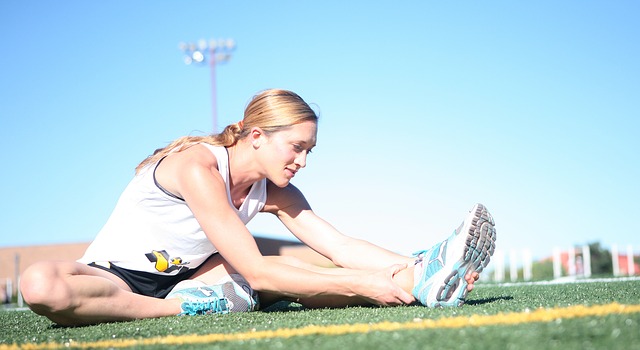Maintaining peak fitness is about more than just pumping iron. To stay at the top of your game, it takes a combination of factors, from flexibility training and proper stretching & massage. (Deep massage works well).
Whether you’re a professional athlete or fitness enthusiast, staying fit should be a long-term commitment. But it takes time and preparation, as well as an understanding of when to go hard and when to go slow.
With the right attitude and information, staying motivated and healthy is a walk in the park.
Why Stretching Impacts Your Fitness
We all know that stretching is an important part of exercising. But let’s be honest – it can be easy to push aside. However, it’s important to always add stretching to your exercise routines.
Why? Simply put, your muscles need regular stretching to keep them at peak performance. Here are some other benefits stretching has:
- Helps you sit and stand better by lengthening tight muscles
- Decreases the chances of injury
- Reduces muscle soreness
- Improves overall flexibility and range of motion
- Calms your mind
Whether you’re going for a run or playing competitive sport, stretching beforehand will help keep your muscles flexible and reduce your chances of injury. Before you stretch, just remember to do some very light exercise, otherwise you’ll be at risk of tearing your muscles.
We’ve all felt that aching feeling after an intense workout. While “feeling the burn” can be a rewarding feeling, it’s important to counteract this with post-exercise stretching. When your muscles are working hard, they release Lactic acid – the chemical that causes cramping.
Stretching helps disperse the acid around your body, instead of lingering dangerously in the one spot.
Not exercising much? Even if you’re taking it slow or you’re in the off season, it’s still important to stretch. Plan a day where you spend at least half an hour focusing on all of your body. An easy way of motivating yourself to do this is by joining a yoga or pilates class.
The importance of flexibility for fitness
For sport and performance, it’s crucial to have a high level of flexibility to maintain peak fitness and reduce injuries.
As we grow older, our muscles naturally lose their strength and size, which can impact the movement around our joints, leading to stiffness and increasing the risk of tears, aches and pains.
To maintain peak mobility and fitness, incorporating flexibility training into your exercise routines is a must. This can include stretching, yoga and pilates, and massage therapy. There are several ways your performance will benefit from better flexibility:
- Reduced soreness of muscles and improved posture
- Improved muscular balance and posture
- Decreased risk of injuries
- Greater physical performance
- Less resistance in muscle tissue during exercise
- Better circulation and transport of nutrients around the body
- Less stress on lower back – particularly though stretching pelvic muscles, hamstrings, hip flexors and quads
- Relaxation of the mind
Stretching is one of the best ways to maintain flexibility. Other methods you can try include resistance training (weights) and cardiovascular exercises such as walking, jogging, swimming and cycling.
Doing both can improve the quality of your muscles, joints and overall health.
As much as stretching and flexibility helps, you also need to work on your diet and nutrition. It’s safe to say that junk food and sugary snacks are a no-go when trying to maintain peak fitness.
Instead, focus on combining a balanced diet full of fresh fruit and vegetables, along with supplements that support your mobility and joints.
How Deep Tissue Massage Improves Fitness
From tennis players to long-distance runners, the threat of injury can feel like the sword of Damocles precariously hanging over one’s head.
Whether it happens due to a lack of stretching or flexibility, or simply out of the blue, fast recoveries are important. One of the best ways to speed up the process is with a deep tissue massage.
So, how does deep tissue massage work? Essentially, when muscles are used intensively, the fibres can become damaged. As noted earlier, this means toxins and lactic acid can build up, causing stiffness and aches.
Deep tissue massages are a great way of relieving the pain and discomfort caused by inflamed muscle fibres. While you’ll definitely feel a deep tissue massage, it should never be too painful – otherwise it could do extra damage.
Here’s a rundown on the benefits of deep tissue massages:
- Speeds up recovery – from stiff legs to serious injuries
- Reduced muscle pain and stress
- Restores flexibility of joints and muscles
- Increase circulation post-exercise
The important thing to keep in mind is that deep tissue massage isn’t a miracle cure. It should always be combined with stretching, plenty of rest, and other forms of therapy.
The Bottom Line
Beyond your usual nutrition and exercises, it’s important to think bigger and smarter when it comes to maintaining peak fitness. By incorporating stretching, flexibility training and deep tissue massage into your regime, you’ll have a better chance of staying on top.
You can find much more information on living a holistic lifestyle in these free magazines and on our YouTube channel.
 Ben is a freelance journalist and copywriter with a passion for nutrition, fitness, wellness and all the things that keep us healthy, happy and around for a long time. You can follow Ben on Twitter.
Ben is a freelance journalist and copywriter with a passion for nutrition, fitness, wellness and all the things that keep us healthy, happy and around for a long time. You can follow Ben on Twitter.






